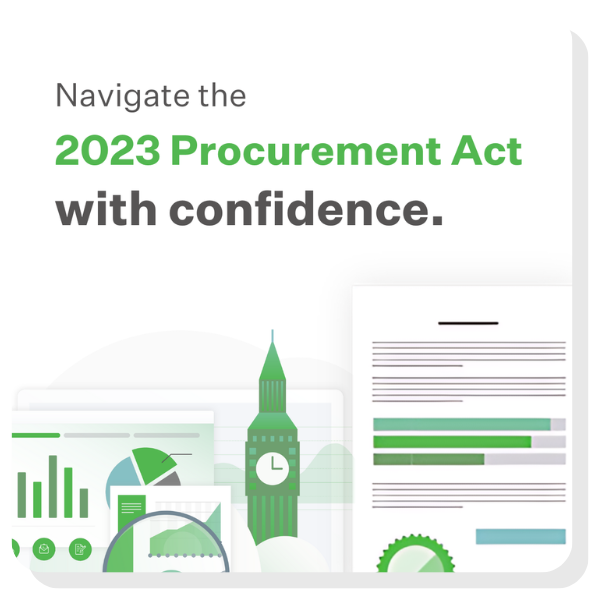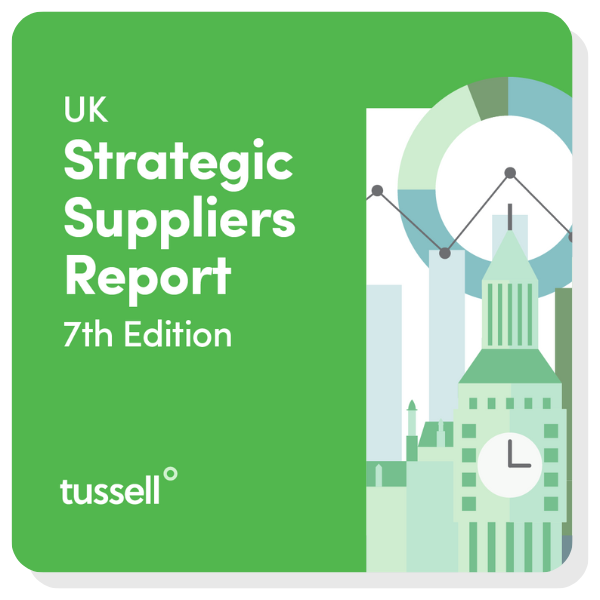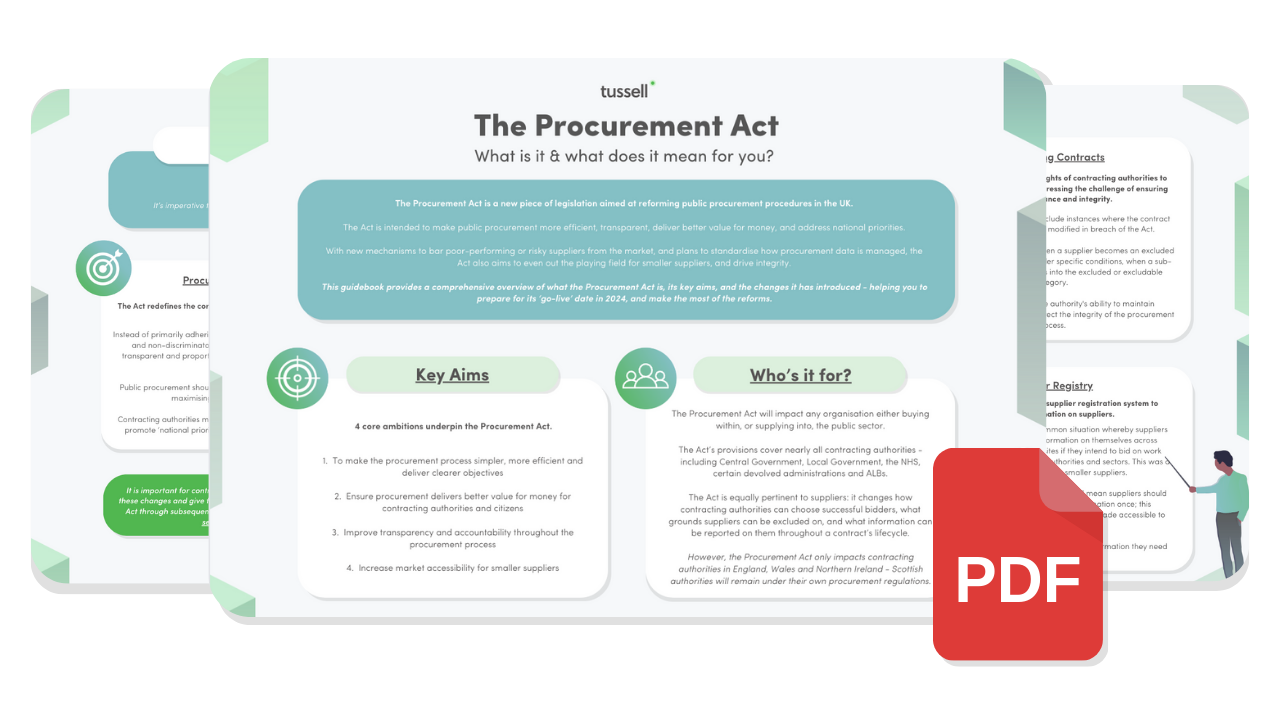The Procurement Act 2023 is set to usher in over a dozen new notices when it goes live in February 2025.
Two of those notices - Planned Procurement Notices and Preliminary Market Engagement Notices - specifically pertain to the pre-tender part of the procurement process.
This article takes a look at Preliminary Market Engagement Notices.
Skip ahead to read about:
- What are Preliminary Procurement Notices?
- Why would a contracting authority conduct preliminary market engagement?
- Who can participate in preliminary market engagements?
- What are the advantages and disadvantages of conducting preliminary market engagement?
- How can suppliers prepare for upcoming tenders?
- Conclusion
Don't fancy reading? Watch the video version of this explainer!
***
This article is part of a series of articles on the 2023 Procurement Act.
Head to Tussell's Procurement Act Hub for all the information and resources you need to get Procurement Act ready.
🤔 What are Preliminary Market Engagement Notices?
Preliminary Market Engagement (PME) Notices are an optional pre-procurement notice that can be published by contracting authorities to invite suppliers to participate in pre-tender market engagement.
This preliminary market engagement (PME) may take the form of an in-person market engagement day, a webinar, or something less formal.
A PME should occur prior to the publication of either:
-
a tender notice (which sets out an authority’s intention to award a public contract and commence a procurement process) or;
-
a transparency notice (which sets out that an authority intends to award a contract directly without running a competitive tendering procedure)
Whilst preliminary market engagement is entirely optional for contracting authorities, a PME notice must be published if preliminary market engagement does occur.
If preliminary market engagement occurs but a PME notice is not published, the contracting authority must provide a justification in the tender notice as to why it did not do so. The reasoning provided will then be open to scrutiny.
If no preliminary market engagement occurred, a contracting authority is under no obligation to publish its reason for not doing so in the tender notice.
❓ Why would a contracting authority conduct preliminary market engagement?
The Procurement Act sets out the following 6 reasons why a contracting authority may choose to engage with suppliers prior to procurement:
-
To develop the authority’s requirements and approach to the procurement;
-
To design a procedure, conditions of participation or award criteria;
-
To prepare the tender notice and associated tender documents;
-
To identify suppliers that may be able to supply the goods, services or works required;
-
To identify likely contractual terms;
-
To build capacity among suppliers in relation to the contract being awarded.
Whilst preliminary market engagement can be a useful tool for buyers and suppliers alike, it is important that contracting authorities ensure that participation does not put certain suppliers at an unfair advantage.
✋ Who can participate in preliminary market engagements?
Cabinet Office guidance suggests that, in the case of a PME notice, the whole market will be able to respond to the exercise in the majority of cases.
However, mechanisms may be included within a PME notice to facilitate a “reduction of numbers”.
This may at times be necessary to enable the contracting authority to deal with all respondents that might express an interest in the PME.
One such mechanism would be to hold a PME specifically aimed at SMEs, for example.
What are Pre-Information Notices?
⚖️ What are the advantages and disadvantages of conducting preliminary market engagement?
When conducted correctly, preliminary market engagement can be an valuable process for buyers and suppliers alike.
Preliminary market engagement allows contracting authorities to gain a greater understanding of the market and the potential solutions out there before committing to specific contractual terms.
In instances where a contracting authority is looking to procure complex products and services, this insight can make all the difference.
For suppliers, engaging in a preliminary market engagement session can help you learn more about a contracting authority's needs. It also enables you to voice your thoughts on the upcoming procurement and help shape the nature of the tender notice.
However, preliminary market engagement can be time-intensive for procurement teams. Thus, they needn't be used in every procurement.
There is also a risk that it may afford prejudicial treatment towards suppliers who are unable to attend. Contracting authorities should do everything in their power to avoid such an outcome.
👍 How can suppliers prepare for upcoming tenders?
PMEs are brilliant opportunities for suppliers to government to get a foot in the door, have their voices heard, and network with other suppliers in the sector.
In addition to attending such opportunities, carrying out detailed desk-based research to understand what has been procured previously is highly advised. This will likely influence the current procurement.
Tools such as Tussell can be used to uncover supplier-buyer relationships, benchmark spending patterns, and discover a supplier's preferred routes to market.
Tussell can also be used to track expiring public sector contracts so that suppliers to government can get ahead of upcoming re-procurements.
When Planned Procurement Notices go live in February 2025, these may also be a useful source of pre-procurement insights for suppliers hoping to get the first-movers advantage in upcoming public sector opportunities.
🌅 Conclusion
Experts suggest that the Procurement Act could increase transparency and demystify the public sector procurement process.
The Preliminary Market Engagement Notice is just one small piece of this puzzle.
Whilst preliminary market engagement is not new (see: What are PINs?), Tussell predicts that PME notices will be an invaluable tool for contracting authorities and suppliers - especially in cases of complex procurement.
However, we will have to wait until after February 24th 2025 to see how often Preliminary Market Engagement Notices are actually used.
* * *
If you're worried about how the Procurement Act will affect your business you're not alone.
The Procurement Act presents the biggest change to public procurement in almost 10 years - possibly even longer.
And, whilst we can try to predict how the market will respond, nobody really knows.
Tussell provides data-driven insights on the public sector market so that, no matter how the procurement landscape changes, you'll always be ahead on the top frameworks, upcoming opportunities and trends in your market.
Book a demo with the Tussell team to learn how you can start using data to drive sales, future-proof your business and de-risk your public sector strategy.
This article is part of a series of articles on the 2023 Procurement Act.
Head to Tussell's Procurement Act Hub for all the information and resources you need to get Procurement Act ready.
Sources:
Claire Jone, Michael Corsham, Procurement Act 2023 - Where are we now? Part 2 (Birketts, https://www.birketts.co.uk/legal-update/procurement-act-2023-where-are-we-now-part-2/)
Guidance: Preliminary Market Engagement (Cabinet Office, https://www.gov.uk/government/publications/procurement-act-2023-guidance-documents-define-phase/guidance-preliminary-market-engagement-html#:~:text=market%2Dengagement%2Dhtml-,What%20is%20preliminary%20market%20engagement%3F,market%20prepare%20for%20the%20procurement.)
Procurement Act 2023 (Legislation.gov, https://www.legislation.gov.uk/ukpga/2023/54/part/3/chapter/1)













.png?width=815&height=200&name=TUSSELL_Demo_CTA_Banners%20(11).png)

.png?width=815&height=200&name=TUSSELL_Demo_CTA_Banners%20(12).png)
.png?width=815&height=200&name=TUSSELL_Demo_CTA_Banners%20(6).png)
-1.png?width=450&height=330&name=Procurement%20Act%20Hub%20Graphics%20(1)-1.png)


